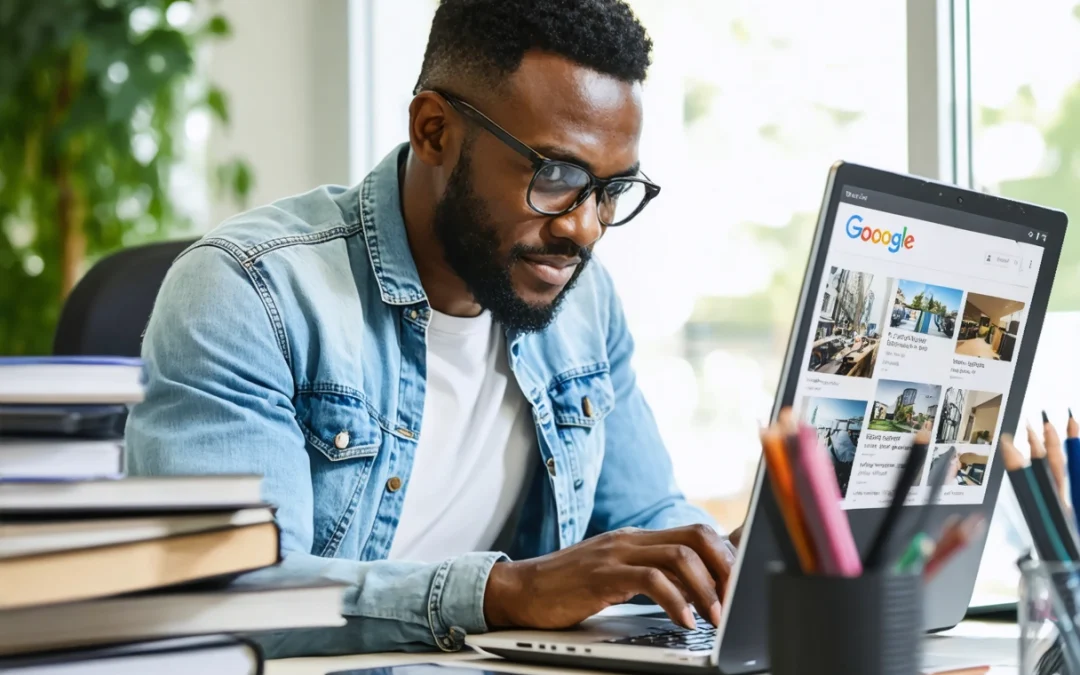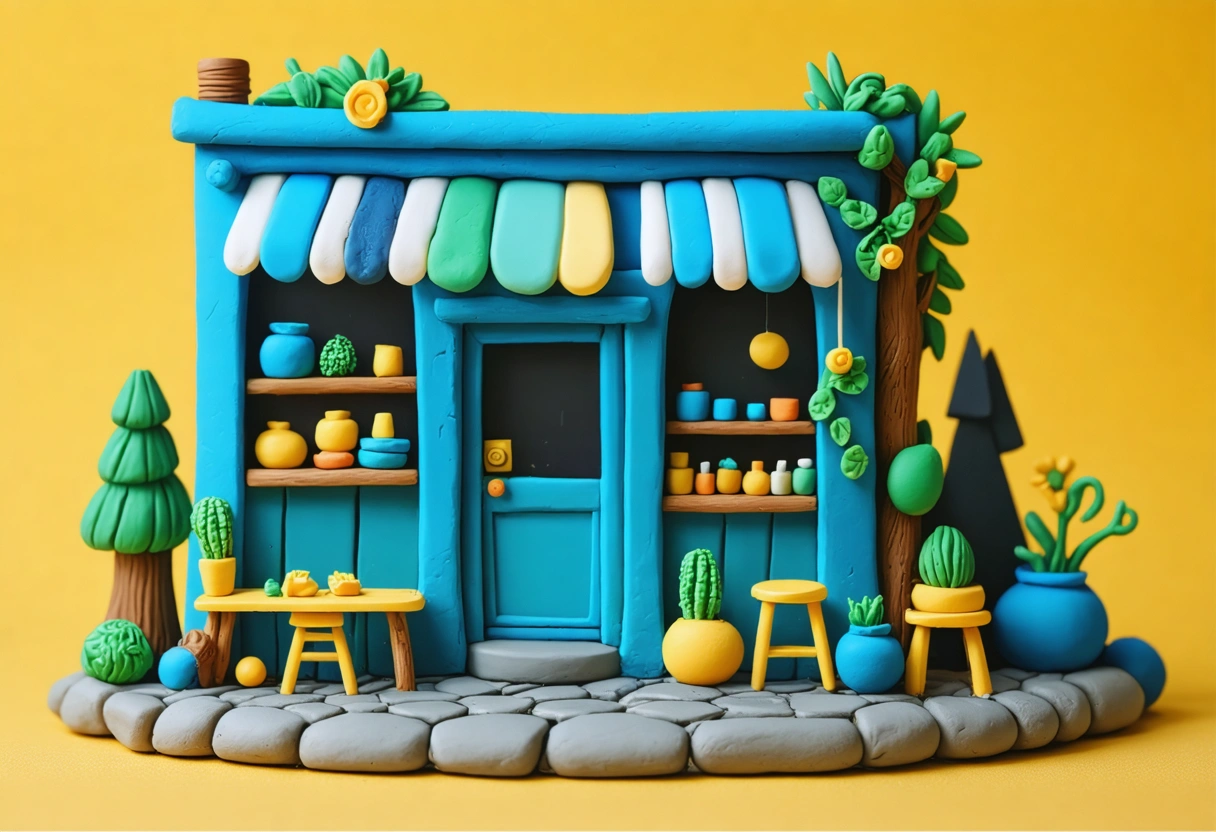
by Guru IS | Dec 3, 2025 | Best Practices
Introduction to Local SEO in 2025
As we step into 2025, local SEO remains a crucial strategy for businesses aiming to capture their local market. With the increasing use of mobile devices and voice search, local SEO techniques have evolved significantly. This guide will explore the best practices for optimizing your local presence on search engines, ensuring you remain ahead of your competitors. From optimizing your Google My Business profile to leveraging local content, we will cover all the essential tactics you need to succeed.
Local SEO is not just about appearing in search results; it’s about creating a comprehensive online presence that resonates with your local audience. This requires a strategic approach to content, links, and user engagement. Let’s delve into the best practices that will help you dominate local search in 2025.
Optimizing Your Google Business Profile
Your Google Business Profile (GBP) is often the first impression potential customers have of your business. Optimizing this profile is essential for local SEO success. Start by ensuring all information is accurate and up-to-date. This includes your business name, address, phone number, and website URL.
Adding high-quality images and videos can make your profile more appealing. Regularly update your business description and highlight any new services or products. Encourage customers to leave reviews and respond to them promptly, as this interaction boosts your local search visibility.
Utilize the Q&A feature to address common customer queries. This not only helps potential customers but also improves your profile’s relevance in search results. Remember, consistency is key; ensure that your business information matches across all online platforms.
Leveraging Local Keywords
Incorporating local keywords into your content strategy is vital. These keywords should reflect the search terms your local audience is using. Tools like Google Keyword Planner and Moz can help you identify relevant keywords. Focus on long-tail keywords that include your location, as they often have less competition and higher conversion rates.

Include these keywords naturally in your website content, blog posts, and social media. For example, if you run a bakery in Austin, phrases like “best bakery in Austin” or “Austin artisan bread” can attract targeted traffic. Regularly update your content to include seasonal or trending local keywords, keeping your site relevant and engaging.
Building Local Citations and Links
Citations and backlinks from reputable local sources can significantly boost your local SEO. Start by listing your business in local directories such as Yelp, Yellow Pages, and industry-specific directories. Ensure consistency in your NAP (Name, Address, Phone number) across all listings, as discrepancies can harm your ranking.
Building relationships with local influencers, bloggers, and businesses can lead to valuable backlinks. Collaborate on community events or co-host webinars to generate buzz and links. Additionally, consider reaching out to local news sites or industry publications for guest posting opportunities.
Participating in local sponsorships or charities can also earn you mentions and links. These efforts not only improve your SEO but also enhance your reputation within the community.
Creating Locally Relevant Content
Producing content that resonates with your local audience is crucial. Focus on topics that matter to your community, such as local events, news, or issues. Share your expertise by offering tips or advice related to your industry. For instance, a local fitness studio might blog about “Staying Fit in Winter” or “Best Outdoor Exercise Spots in Miami.”
Utilize multimedia content, such as videos or infographics, to engage your audience. Hosting webinars or live streams on local topics can also drive traffic and engagement. Encourage your audience to share your content, expanding your reach within the local community.
With the rise of mobile and voice search, optimizing for these platforms is essential. Ensure your website is mobile-friendly and loads quickly, as slow sites can deter potential customers. Use tools like Google’s Mobile-Friendly Test to analyze and improve your site’s performance.

Voice search optimization involves understanding how people speak their queries. Focus on natural language and question-based keywords. For example, instead of “pizza delivery,” optimize for “where can I get pizza delivered near me?” Providing concise answers to common questions can increase your chances of appearing in voice search results.
Utilizing Social Media for Local Engagement
Social media is a powerful tool for engaging with your local audience. Platforms like Facebook, Instagram, and Twitter allow you to connect with customers and promote your brand. Share content that highlights your local involvement, such as community events or partnerships.
Engage with your audience by responding to comments and messages promptly. Use location-based hashtags to increase your visibility among local users. Hosting contests or giveaways can also boost your engagement and attract new followers.
Staying Ahead in Local SEO
As the digital landscape continues to evolve, staying ahead in local SEO requires a commitment to continuous learning and adaptation. By optimizing your Google My Business profile, leveraging local keywords, building citations and links, and creating relevant content, you can improve your local search rankings and attract more customers.
Remember to monitor your progress using analytics tools and adjust your strategy as needed. Keep an eye on emerging trends and technologies, such as AI and machine learning, which are shaping the future of SEO. With dedication and the right approach, you can maintain a competitive edge in your local market in 2025 and beyond.
Embracing Advanced Analytics for Local SEO
In the realm of local SEO, analytics play a pivotal role in understanding your audience and optimizing your strategies. As we move further into 2025, advanced analytics tools are becoming indispensable for businesses aiming to refine their local SEO efforts. These tools provide insights into customer behavior, search patterns, and the effectiveness of your online presence.

Google Analytics remains a cornerstone for tracking website performance, providing data on user demographics, popular pages, and conversion rates. By setting up goals and tracking user interactions, you can determine which aspects of your strategy are working and what needs improvement. Additionally, platforms like Google Search Console offer valuable information on how your site appears in search results, helping you identify and fix issues that may be hindering your visibility.
Consider using local-specific analytics tools that focus on geographic data. These tools can help you understand where your traffic is coming from and tailor your marketing efforts accordingly. By analyzing trends and performance metrics, you can make data-driven decisions to enhance your local SEO strategy.
Implementing Schema Markup for Local Search
Schema markup is a powerful tool that can enhance your local SEO by providing search engines with additional information about your business. This structured data helps search engines understand the context of your content, potentially leading to enhanced search result listings, known as rich snippets.
For local businesses, implementing local business schema is particularly beneficial. This markup includes details such as your business address, phone number, operating hours, and customer reviews. By providing this information, you increase your chances of appearing in local search results and improving click-through rates.
Utilize tools like Google’s Structured Data Markup Helper to implement schema on your website. Regularly update your schema information to reflect any changes in your business details. As search engines continue to evolve, staying updated with the latest schema guidelines can give you a competitive edge in local search.
Encouraging Customer Reviews and Testimonials
Customer reviews and testimonials are a critical component of local SEO. Positive feedback not only enhances your online reputation but also influences search engine rankings. Search engines view reviews as a signal of credibility and trustworthiness, making them an essential factor in local search algorithms.

Encourage your customers to leave reviews on platforms like Google, Yelp, and Facebook. Make the process easy by providing direct links or QR codes that lead to your review pages. Respond to reviews—both positive and negative—in a timely and professional manner. This interaction demonstrates your commitment to customer satisfaction and can improve your relationship with clients.
Showcase testimonials on your website and social media to build trust with potential customers. Highlighting real experiences can persuade undecided prospects to choose your business over competitors. Remember, authentic and detailed reviews are more valuable than generic ones, so encourage customers to share specific experiences.
Fostering Community Engagement and Partnerships
Building strong relationships within your community can significantly boost your local SEO efforts. Engaging with local organizations, participating in community events, and forming partnerships with other businesses can increase your visibility and credibility.
Consider sponsoring local events or charities, which can lead to media coverage and backlinks from reputable local sources. Collaborate with complementary businesses on joint promotions or events to expand your reach and attract new customers. For example, a local coffee shop might partner with a nearby bookstore for a combined event, benefiting both parties.
Engagement doesn’t stop at offline interactions. Use social media to highlight your community involvement, share updates, and encourage local followers to participate. These efforts can foster a sense of community and loyalty among your customers, ultimately enhancing your brand’s local presence.
Adapting to AI and Machine Learning in Local SEO
Artificial intelligence (AI) and machine learning are transforming the SEO landscape, and local SEO is no exception. These technologies are enabling more personalized and predictive search experiences, making it essential for businesses to adapt their strategies accordingly.

AI can help you analyze large amounts of data quickly, providing insights into customer behavior and preferences. Use AI-powered tools to automate and optimize your local SEO efforts, such as keyword research, content creation, and audience targeting. Machine learning algorithms can help you predict trends and adjust your strategy to stay ahead of the competition.
Voice search is another area where AI is making a significant impact. As voice assistants become more widespread, optimizing for voice search is crucial. Focus on natural language and conversational keywords that match how people speak their queries. Providing concise and accurate answers to common questions can improve your chances of being featured in voice search results.
The Future of Local SEO: Trends to Watch
As we look towards the future, several trends are poised to influence local SEO. The increasing integration of augmented reality (AR) in local search is one such trend. AR can enhance user experiences by providing interactive content, such as virtual tours or product demonstrations, directly within search results.
Another trend is the growing importance of privacy and data security. As consumers become more aware of their online privacy, businesses must ensure they adhere to data protection regulations and communicate their privacy practices transparently.
Finally, the rise of hyper-local marketing is changing how businesses approach local SEO. This strategy focuses on targeting specific neighborhoods or communities, offering personalized content and promotions tailored to local interests. By embracing these trends and technologies, businesses can stay ahead in the competitive landscape of local SEO.
In conclusion, mastering local SEO in 2025 requires a multifaceted approach that combines traditional strategies with innovative technologies. By staying informed and adaptable, businesses can enhance their local presence and achieve lasting success.

by Guru IS | Nov 30, 2025 | Hosting
Understanding the Importance of Proprietary Hosting
In the ever-evolving digital landscape, the choice of a web hosting service can dramatically impact the success of your website. With numerous options available, ranging from shared hosting to dedicated servers, understanding the importance of proprietary hosting becomes crucial. This guide delves into why proprietary hosting, particularly through Guru Internet Services, stands out from worldly hosting options, offering unique advantages that cater to specific needs.
The term “proprietary hosting” often refers to a hosting service where the provider owns and manages its own infrastructure. This contrasts with more common hosting solutions that rely on third-party infrastructure. Guru Internet Services exemplifies this model, offering a suite of benefits that can propel your website to new heights.
Enhanced Security Measures
Security is a top concern for any website owner. Proprietary hosting services like Guru Internet Services prioritize security by maintaining complete control over their infrastructure. They can implement robust security measures tailored to the specific needs of their clients, ensuring a higher level of protection against cyber threats.
By owning the hardware and software, Guru Internet Services can deploy custom firewalls, intrusion detection systems, and regular security audits. This proactive approach minimizes vulnerabilities and helps safeguard sensitive information. As cyber threats continue to evolve, relying on a hosting provider with proprietary solutions ensures your data remains secure.
Optimal Performance and Reliability
Performance and reliability are critical factors for any website. Proprietary hosting platforms like Guru Internet Services guarantee superior performance by optimizing their infrastructure for speed and efficiency. Unlike shared hosting services that may suffer from resource constraints, proprietary hosts allocate dedicated resources to each client, ensuring consistent performance even during peak traffic periods.

Moreover, Guru Internet Services invests in state-of-the-art hardware and technology to reduce downtime and enhance reliability. This commitment to excellence translates to faster load times and a seamless user experience, which are vital for maintaining visitor engagement and improving search engine rankings.
Scalability and Customization
As your website grows, so do its hosting needs. Proprietary hosting services offer unparalleled scalability, allowing you to upgrade resources as needed without experiencing downtime. Guru Internet Services provides flexible plans that can accommodate traffic spikes and increased demand seamlessly.
Customization is another significant advantage. With proprietary hosting, you have the freedom to tailor server configurations and software to match your specific requirements. This level of control is particularly beneficial for businesses with unique applications or complex website architectures, ensuring optimal performance and functionality.
Advantages of Guru Internet Services
When comparing Guru Internet Services to broader hosting options, several distinct advantages become apparent. These advantages make Guru a compelling choice for businesses and individuals seeking a reliable hosting partner that aligns with their specific goals and requirements.
Superior Customer Support
One of the standout features of Guru Internet Services is their commitment to exceptional customer support. Unlike many global hosting providers that often rely on outsourced support teams, Guru prides itself on offering in-house experts who are intimately familiar with their infrastructure and services.
Clients can expect prompt and knowledgeable assistance, whether they need help troubleshooting technical issues or optimizing their hosting environment. This personalized approach not only resolves problems efficiently but also empowers clients to make informed decisions about their hosting needs.

Environmental Responsibility
In an era where environmental sustainability is increasingly important, Guru Internet Services takes proactive steps to minimize their carbon footprint. By owning their data centers, they can implement energy-efficient practices and invest in renewable energy sources.
This commitment to environmental responsibility resonates with businesses and individuals who prioritize sustainability. By choosing a hosting provider that aligns with green initiatives, clients contribute to a more sustainable future while enjoying top-tier hosting services.
Transparent Pricing and Value
Unlike some hosting providers that lure customers with low initial rates only to surprise them with hidden fees, Guru Internet Services offers transparent pricing. Their straightforward pricing model ensures clients know exactly what they are paying for, avoiding unexpected costs.
Moreover, the value provided by Guru Internet Services goes beyond competitive pricing. The combination of superior performance, security, and support means clients receive a comprehensive hosting solution that delivers exceptional return on investment. This focus on providing value makes Guru a favored choice for discerning customers.
Making the Right Hosting Choice
In conclusion, understanding the importance of proprietary hosting opens the door to numerous advantages that can elevate your online presence. Guru Internet Services exemplifies these benefits through enhanced security, optimal performance, scalability, customization, and unparalleled support.

While worldly hosting options may offer initial appeal, the long-term value and reliability of a proprietary hosting partner like Guru are unmatched. By choosing a hosting service that aligns with your unique needs, you ensure the success and sustainability of your digital endeavors.
Ultimately, the decision to opt for proprietary hosting is a strategic investment in the future of your website. With Guru Internet Services, you gain a trusted partner committed to your success, offering the tools and expertise needed to thrive in today’s competitive digital landscape.
Tailored Solutions for Diverse Needs
One of the most compelling advantages of proprietary hosting through Guru Internet Services is the ability to provide tailored solutions that address the diverse needs of clients. In contrast to generic hosting services that offer a one-size-fits-all approach, Guru takes the time to understand the unique requirements of each client. This personalized attention ensures that businesses receive a hosting environment optimized for their specific applications and goals.
For example, e-commerce websites handling significant transaction volumes require robust security and rapid processing capabilities. Guru Internet Services can configure servers to meet these demands, ensuring that customers experience smooth and secure shopping experiences. On the other hand, content-heavy websites, such as blogs or news sites, benefit from enhanced caching and content delivery network (CDN) integrations that Guru can efficiently implement.
Innovative Technology and Infrastructure
Guru Internet Services stands out for its commitment to leveraging innovative technology and cutting-edge infrastructure. This dedication is evident in their continuous investment in the latest hardware, software, and network technologies. By staying at the forefront of technological advancements, Guru ensures that their clients benefit from the fastest, most reliable hosting solutions available.
For businesses that rely on data-driven insights, Guru’s infrastructure supports advanced analytics and data processing capabilities. This empowers clients to make informed decisions based on real-time data, enhancing their competitive edge. Additionally, Guru’s embrace of cloud computing infrastructure offers unparalleled flexibility and scalability, enabling businesses to adapt to changing market demands swiftly.

Seamless Migration and Transition Support
Switching hosting providers can be daunting, especially when dealing with complex websites and applications. Guru Internet Services alleviates this challenge by offering seamless migration and transition support. Their team of experts assists clients in transferring their websites and applications with minimal disruption to operations.
With a meticulous approach to migration, Guru ensures that every aspect of your website, from databases to configurations, is accurately replicated on their servers. This level of attention to detail minimizes downtime and ensures a smooth transition, allowing businesses to focus on their core activities without worrying about technical hiccups.
Comprehensive Backup and Disaster Recovery
Data loss can have devastating consequences for businesses, leading to lost revenue, damaged reputation, and customer dissatisfaction. Guru Internet Services prioritizes data protection through comprehensive backup and disaster recovery solutions. By implementing automated backup systems and redundant storage configurations, Guru ensures that client data is safeguarded against unforeseen events.
In the event of a disaster, Guru’s disaster recovery protocols enable rapid data restoration, minimizing downtime and ensuring business continuity. This proactive approach not only protects sensitive information but also instills confidence in clients that their data is in safe hands, allowing them to focus on growth and innovation.
Competitive Edge in a Global Market
In today’s interconnected world, businesses must remain competitive at both local and global levels. Proprietary hosting through Guru Internet Services provides a strategic advantage by offering localized solutions that cater to specific market needs. This localized approach ensures faster load times and improved user experiences for geographically diverse audiences.

By leveraging content delivery networks (CDNs) and geographically distributed data centers, Guru minimizes latency and ensures that content reaches users quickly, regardless of their location. This global reach enables businesses to expand their audience and market reach, ultimately driving growth and success.
Choosing Guru Internet Services: A Strategic Decision
Ultimately, choosing Guru Internet Services as your proprietary hosting provider is a strategic decision that aligns with your business objectives. By prioritizing security, performance, customization, and support, Guru empowers businesses to thrive in a competitive digital landscape. This partnership not only enhances your online presence but also positions your brand for sustained growth and success.
As the digital realm continues to evolve, the importance of reliable hosting cannot be overstated. Guru Internet Services offers the expertise, technology, and dedication needed to navigate this ever-changing environment successfully. By investing in proprietary hosting, you gain a trusted ally committed to helping you achieve your digital goals.
In conclusion, the advantages of proprietary hosting through Guru Internet Services are undeniable. From tailored solutions and innovative technology to seamless migration and global competitiveness, Guru provides a comprehensive hosting solution that caters to the unique needs of each client. By choosing Guru, you secure a reliable and forward-thinking hosting partner dedicated to your success in the digital world.
Building Long-Term Partnerships
One of the most significant benefits of choosing Guru Internet Services is the opportunity to build a long-term partnership. Unlike providers that offer transactional relationships, Guru focuses on nurturing enduring connections with their clients. This commitment is reflected in their proactive approach to customer support, continuous improvements, and personalized service offerings.
Such partnerships foster mutual growth, as Guru’s success is intertwined with the success of their clients. By prioritizing collaboration and understanding, Guru Internet Services ensures that their clients are not just customers but valuable partners on a shared journey towards achieving digital excellence.
Need help with Understanding the Importance of Proprietary Hosting: Advantages of Guru Internet Services over Worldly Hosting Options?
Schedule a Strategy Session!

by Guru IS | Nov 26, 2025 | SEO
How to Boost Your Online Visibility with Guru’s Proven SEO Strategies
In today’s competitive digital landscape, enhancing your online visibility is crucial for success. Whether you are a small business owner, a digital marketer, or an entrepreneur, mastering the art of SEO can significantly elevate your brand’s presence on the internet. This comprehensive guide will walk you through Guru’s proven SEO strategies that can transform your online visibility.
Understanding the Importance of SEO
Search Engine Optimization (SEO) is the practice of optimizing your website to improve its visibility in search engine results pages (SERPs). When executed effectively, SEO can drive organic traffic, increase brand awareness, and ultimately lead to higher conversions. In fact, according to Search Engine Journal, SEO is one of the most cost-effective digital marketing strategies available.
By focusing on elements such as keyword research, on-page optimization, and quality content creation, businesses can enhance their online presence and stay ahead of the competition. Let’s delve deeper into these components and explore how you can implement them effectively.
Keyword Research: The Foundation of SEO
Keyword research is the cornerstone of any successful SEO strategy. It involves identifying the terms and phrases that your target audience uses when searching for products or services similar to yours. By understanding these keywords, you can tailor your content to meet the needs of your audience and improve your visibility on search engines.

Tools like Moz’s Keyword Explorer and Google’s Keyword Planner can help you identify high-volume and low-competition keywords. When selecting keywords, consider user intent, search volume, and competition to ensure that you are targeting the right audience. Once you’ve identified your keywords, incorporate them naturally into your content, meta tags, and headings.
On-Page Optimization: Enhancing Your Website’s Structure
On-page optimization refers to the practice of optimizing individual web pages to rank higher and attract more relevant traffic. This involves various elements such as title tags, meta descriptions, header tags, and URL structure. According to Search Engine Watch, paying attention to these details can significantly improve your site’s SEO performance.
Ensure that each page on your website has a unique and descriptive title tag that includes your main keyword. Similarly, craft compelling meta descriptions that encourage users to click through to your site. Use header tags (H1, H2, H3) to structure your content, making it easier for both users and search engines to understand the hierarchy of information on your page.
Quality Content Creation: Engaging Your Audience
Content is king in the world of SEO. Creating high-quality, relevant, and engaging content is essential for attracting and retaining your audience’s attention. Not only does quality content improve user experience, but it also encourages other websites to link back to your site, boosting your domain authority.
Focus on producing content that addresses the needs and interests of your target audience. Utilize various formats such as blog posts, infographics, videos, and podcasts to cater to different preferences. Additionally, update your content regularly to keep it fresh and relevant. According to a study by HubSpot, companies that publish 16 or more blog posts per month receive 3.5 times more traffic than those that publish four or fewer posts.

Technical SEO: Optimizing Your Website’s Performance
Technical SEO involves optimizing your website’s infrastructure to ensure that it meets the requirements of modern search engines. This includes improving page speed, ensuring mobile-friendliness, and resolving any crawl errors. A well-optimized website not only enhances user experience but also signals to search engines that your site is trustworthy and reliable.
Utilize tools like Google PageSpeed Insights to analyze your site’s performance and identify areas for improvement. Additionally, ensure that your website is mobile-responsive by using a responsive design that adapts to different screen sizes. By addressing technical SEO issues, you can ensure that your site is easily accessible to both users and search engines.
Link Building: Establishing Authority and Trust
Link building is the process of acquiring backlinks from other websites to your own. These backlinks act as votes of confidence, signaling to search engines that your site is a credible and authoritative source of information. However, not all backlinks are created equal. Focus on acquiring high-quality backlinks from reputable and relevant websites.
Engage in guest blogging, collaborate with influencers, and participate in industry forums to build relationships and earn valuable backlinks. Additionally, create shareable content that naturally attracts links from other websites. According to Backlinko, websites with a strong backlink profile tend to rank higher in search engine results.
Boosting your online visibility is a multifaceted process that requires a strategic and comprehensive approach. By implementing Guru’s proven SEO strategies, you can enhance your website’s performance, attract more organic traffic, and ultimately achieve your business goals. Remember, SEO is not a one-time task but an ongoing effort that requires constant monitoring and adjustment.

As you embark on your SEO journey, keep in mind the importance of keyword research, on-page optimization, quality content creation, technical SEO, and link building. By focusing on these key areas, you can position your brand for success in the ever-evolving digital landscape. Stay informed about the latest SEO trends and updates, and continue to refine your strategies to maintain a competitive edge.
Leveraging Social Media for Enhanced SEO Impact
Social media is not a direct ranking factor for SEO, but it plays a significant role in enhancing your online visibility and driving traffic to your website. By leveraging social media platforms such as Facebook, Instagram, Twitter, and LinkedIn, you can amplify your content reach, engage with your audience, and encourage social sharing.
To maximize the SEO benefits of social media, ensure that your social profiles are complete and optimized with relevant keywords. Share valuable content consistently and engage with your audience by responding to comments and messages. Encourage your followers to share your content, which can lead to increased visibility and potentially attract backlinks from other websites. According to Social Media Examiner, social signals can indirectly influence your SEO efforts by increasing brand awareness and driving more traffic to your site.
Utilizing Local SEO for Small Businesses
For small businesses, local SEO is a powerful strategy to attract customers in your geographical area. By optimizing your website for local search queries, you can increase your visibility to users searching for businesses like yours in their vicinity. This is particularly important for businesses with a physical location, such as restaurants, retail stores, and service providers.
Start by claiming and optimizing your Google My Business listing. Ensure that your business name, address, and phone number (NAP) are consistent across all online directories. Encourage satisfied customers to leave positive reviews, as these can influence your local search rankings. Additionally, create location-specific content that addresses the needs and interests of your local audience. According to Moz, local SEO is an essential component of an effective online marketing strategy for small businesses seeking to attract nearby customers.

Measuring and Analyzing Your SEO Performance
To ensure that your SEO strategies are effective, it’s crucial to measure and analyze your performance regularly. By tracking key metrics, you can identify areas of improvement and make data-driven decisions to refine your strategies. Key performance indicators (KPIs) to monitor include organic traffic, bounce rate, conversion rate, and keyword rankings.
Utilize tools such as Google Analytics and Google Search Console to gain insights into your website’s performance. These tools provide valuable data on user behavior, traffic sources, and search queries. Regularly reviewing these metrics allows you to understand what is working and what needs adjustment in your SEO efforts. According to HubSpot, leveraging analytics is essential for optimizing your marketing strategies and achieving better results.
Staying Updated with SEO Trends and Algorithm Changes
The world of SEO is constantly evolving, with search engines frequently updating their algorithms to deliver better search results. To stay ahead of the competition, it’s important to keep up with the latest SEO trends and algorithm changes. This ensures that your strategies remain effective and compliant with search engine guidelines.
Follow reputable SEO blogs, attend industry conferences, and participate in online forums to stay informed about the latest developments in the field. By staying updated, you can quickly adapt your strategies to align with new best practices and maintain your competitive edge. According to Search Engine Journal, being proactive and informed about SEO trends can help you anticipate changes and adjust your strategies accordingly.

Building a Long-Term SEO Strategy
SEO is not a quick fix but a long-term strategy that requires patience and persistence. To achieve sustainable results, focus on building a comprehensive SEO plan that encompasses all the key elements we have discussed. Set clear goals, establish a timeline, and allocate resources to ensure the successful implementation of your strategies.
Regularly review and update your SEO plan to reflect changes in your business objectives and the evolving digital landscape. By maintaining a long-term perspective, you can build a strong online presence that consistently delivers results. Remember that SEO is a journey, not a destination. By committing to continuous improvement and adaptation, you can achieve lasting success in the ever-changing digital world.
Final Thoughts
Improving your online visibility with Guru’s proven SEO strategies is a rewarding endeavor that can significantly impact your business’s growth and success. By focusing on keyword research, on-page optimization, quality content creation, technical SEO, link building, social media engagement, and local SEO, you can enhance your website’s performance and attract more organic traffic.
Keep in mind that SEO is an ongoing process that requires dedication and effort. Stay informed about the latest trends, measure your performance, and refine your strategies to ensure continued success. By embracing a holistic and long-term approach, you can establish a strong online presence that stands the test of time.
As you implement these strategies, remember that the ultimate goal is to create a positive and valuable experience for your audience. By prioritizing user satisfaction, you can build trust and credibility, paving the way for lasting success in the digital landscape.

by Guru IS | Nov 23, 2025 | Digital Marketing
In today’s digital age, establishing a strong online presence is crucial for businesses and individuals alike. Social media platforms have evolved into powerful tools that can significantly enhance your visibility and engagement with your target audience. However, navigating the social media landscape can be overwhelming without a clear strategy. This comprehensive guide delves into effective social media strategies to help you boost your online presence and achieve your digital marketing goals.
Whether you’re a seasoned marketer or just starting out, understanding the nuances of social media can make a significant difference in your online success. From choosing the right platforms to creating engaging content and analyzing your performance, each step plays a vital role in building a robust online presence. Let’s explore these strategies in detail to help you harness the full potential of social media.
Selecting the Right Social Media Platforms
The first step in crafting an effective social media strategy is selecting the platforms that align with your goals and audience. Not all social media sites are created equal; each has its unique strengths and demographics. For instance, understanding social media demographics can guide your platform selection.
Consider platforms like Facebook, which boasts a diverse user base, ideal for broad reach and community building. Instagram, on the other hand, caters to a younger, visually-oriented audience, making it perfect for brands with visually appealing products. LinkedIn is indispensable for B2B marketing and professional networking, while Twitter excels in real-time engagement and news dissemination.
To make an informed decision, research where your target audience spends their time and the type of content they consume. This knowledge will direct your efforts towards platforms that offer the highest potential for engagement and conversion.
Crafting Engaging Content

Once you’ve identified the right platforms, the next step is crafting content that resonates with your audience. Content is the backbone of any successful social media strategy. It should be informative, engaging, and relevant to your audience’s interests. The key is to maintain a consistent brand voice across all your posts.
Visual content, such as images and videos, tends to perform exceptionally well on social media. Creating high-quality visuals that tell a story or convey a message can capture your audience’s attention and encourage interaction. Additionally, keep in mind the importance of visual content marketing in enhancing engagement and retention.
Don’t underestimate the power of storytelling in your content. Sharing authentic stories about your brand, employees, or customers can humanize your business and foster a deeper connection with your audience. Whether it’s a behind-the-scenes look at your operations or a customer success story, storytelling can significantly boost engagement.
Utilizing Social Media Tools and Analytics
Effective use of social media tools and analytics is essential for optimizing your strategy and measuring success. Tools like Hootsuite, Buffer, and Sprout Social can streamline your posting schedule, monitor mentions, and track engagement metrics across different platforms. This not only saves time but also ensures consistency in your social media efforts.
Analytics play a crucial role in understanding the performance of your content and campaigns. By analyzing data such as likes, shares, comments, and reach, you can identify what works and what doesn’t. This information allows you to refine your strategy, focusing on content that resonates with your audience and drives engagement.
Additionally, platforms like Twitter Analytics and Facebook Insights offer valuable insights into audience behavior and preferences. Use these insights to tailor your content and posting schedule to match your audience’s activity patterns, maximizing visibility and interaction.
Building a Community and Encouraging Interaction

Building a community around your brand is a powerful way to boost your online presence. By fostering a sense of belonging and encouraging interaction, you can create loyal brand advocates who actively engage with your content and spread the word about your business.
Engage with your audience by responding to comments, messages, and mentions promptly. This not only shows that you value their input but also encourages further interaction. Hosting live sessions, polls, and contests can also stimulate engagement and strengthen your community.
Another effective strategy is leveraging user-generated content. Encourage your followers to share their experiences with your products or services, and feature their content on your social media channels. This not only provides authentic testimonials but also strengthens the bond between your brand and its audience.
Collaborating with Influencers
Influencer marketing has become a staple in many social media strategies due to its ability to reach a broader audience through trusted voices. Collaborating with influencers who align with your brand values can significantly amplify your message and enhance your credibility.
When selecting influencers, focus on those whose followers match your target demographic. Micro-influencers, although having a smaller following, often boast higher engagement rates and a more loyal audience. Their endorsements can carry more weight and lead to higher conversion rates.
Establishing a genuine relationship with influencers is crucial for successful collaborations. Instead of one-off promotions, aim for long-term partnerships where the influencer truly understands and believes in your brand. This authenticity will resonate with their audience and drive meaningful engagement.
Embracing a Dynamic Social Media Strategy

Boosting your online presence through effective social media strategies requires a dynamic approach. By selecting the right platforms, crafting engaging content, leveraging tools and analytics, building a community, and collaborating with influencers, you can create a robust online presence that drives growth and engagement.
Remember that social media is ever-evolving, and staying updated with the latest trends and technologies is essential. Continually analyze your performance, adapt your strategies, and remain open to new opportunities for engagement. With dedication and creativity, you can harness the power of social media to elevate your brand and achieve your digital marketing objectives.
For further insights into social media strategies, explore this beginner’s guide to social media that delves deeper into each aspect of building a successful online presence.
As you continue to develop your social media strategy, it’s important to remain flexible and responsive to the changing digital landscape. The ability to pivot and adapt is crucial in maintaining a competitive edge and ensuring that your efforts yield the desired results. Below, we explore additional strategies and considerations to further enhance your social media presence.
Leveraging Paid Advertising on Social Media
While organic reach is valuable, paid advertising on social media platforms can significantly amplify your efforts and reach a broader audience. Social media ads offer advanced targeting options, allowing you to reach specific demographics, interests, and behaviors. This precision ensures that your content is seen by users who are most likely to engage with it.
Platforms like Facebook and Instagram provide robust advertising tools that enable you to create visually appealing ads tailored to your objectives. Whether you’re looking to increase brand awareness, drive traffic to your website, or boost sales, social media advertising can be a cost-effective way to achieve your goals.
It’s essential to set clear objectives and establish a budget before launching your ad campaigns. Continuously monitor the performance of your ads using tools like Facebook Ads Manager to make data-driven decisions and optimize your campaigns for better results. For more insights on maximizing your ad spend, consider exploring social media advertising best practices.

Incorporating SEO into Your Social Media Strategy
Search Engine Optimization (SEO) is often associated with website content, but integrating SEO principles into your social media strategy can enhance your visibility and reach. By optimizing your social media profiles and content, you increase the chances of appearing in search results both on social media platforms and search engines like Google.
Start by ensuring that your social media profiles are complete and include relevant keywords in your bios and descriptions. Use consistent branding across all platforms to strengthen your online identity. When creating content, incorporate keywords naturally in your posts, captions, and hashtags to improve searchability.
Engagement also plays a role in social media SEO. The more interactions your posts receive, the more likely they are to be favored by algorithms. Encourage likes, shares, and comments to boost your content’s visibility. For further guidance on integrating SEO and social media, check out this detailed guide to combining SEO with social media.
Monitoring Trends and Adapting to Changes
Social media trends are constantly evolving, and staying informed about the latest developments can give you a competitive advantage. Monitoring trends allows you to adapt your strategy to meet changing consumer preferences and capitalize on new opportunities for engagement.
Keep an eye on emerging platforms and features that could benefit your brand. For example, the rise of short-form video content on platforms like TikTok and Instagram Reels has opened new avenues for creative expression and audience engagement. By experimenting with these formats, you can reach younger audiences and showcase your brand’s personality.
Additionally, be aware of algorithm changes that may impact your content’s visibility. Platforms frequently update their algorithms to prioritize quality content and improve user experience. Staying ahead of these changes allows you to adjust your approach and maintain your reach. For insights into current social media trends, explore this comprehensive report on social media trends.

Fostering Authenticity and Transparency
In an era where consumers crave authenticity, building trust through transparent communication is more important than ever. Authenticity fosters a genuine connection with your audience and can differentiate your brand in a crowded marketplace.
Be open and honest in your interactions with followers. Share behind-the-scenes content, admit to mistakes, and celebrate achievements. This transparency humanizes your brand and builds credibility. Encourage user feedback and show appreciation for your community‘s support to strengthen relationships.
Moreover, partnering with influencers who genuinely align with your brand values can enhance authenticity. Ensure that any collaborations are sincere and that influencers have a genuine affinity for your products or services. For more on fostering authenticity in digital marketing, explore this insightful article on building authenticity on social media.
Continuously Evolving Your Social Media Strategy
Developing a successful social media strategy is not a one-time task but an ongoing process that requires continuous refinement and adaptation. By leveraging paid advertising, incorporating SEO, monitoring trends, and fostering authenticity, you can create a dynamic and effective social media presence that resonates with your audience.
Remember that the digital landscape is ever-changing, and staying proactive and informed is key to maintaining a strong online presence. Regularly analyze your performance, seek feedback from your audience, and remain open to experimenting with new tactics and technologies. With dedication and a strategic approach, you can achieve lasting success in the world of social media marketing.

by Guru IS | Nov 19, 2025 | Wordpress
Unlocking the Full Potential of WordPress: How Guru Internet Services Can Transform Your Business Website
WordPress powers over 40% of all websites on the internet today, making it one of the most popular content management systems (CMS) available. Its flexibility, ease of use, and vast library of plugins and themes make it a preferred choice for many businesses. However, to truly leverage its capabilities, businesses need to understand how to optimize and customize their WordPress sites effectively. This is where Guru Internet Services comes into play, offering specialized expertise to transform your business website into a powerful online asset.
Why Choose WordPress for Your Business?
WordPress is renowned for its versatility. Whether you’re a small business owner or part of a large corporation, WordPress can be customized to suit your specific needs. Its open-source nature means that it is constantly being updated and improved by a global community of developers.
Moreover, WordPress is SEO-friendly right out of the box. It comes with built-in tools and plugins that help optimize your content, improve site speed, and enhance user experience. These factors significantly contribute to better search engine rankings, which is crucial for any business looking to increase its online visibility.
The Role of Guru Internet Services
While WordPress offers many advantages, unlocking its full potential often requires expert guidance. Guru Internet Services specializes in optimizing WordPress websites to ensure they perform at their best. This includes customizing themes, optimizing for search engines, and ensuring robust security measures are in place.
One of the standout features of Guru Internet Services is their comprehensive approach to WordPress development. They don’t just focus on aesthetics; they ensure that your website is fast, secure, and user-friendly. This holistic approach ensures that visitors have a positive experience, which can lead to higher conversion rates and increased sales.

Customization and Theme Development
WordPress offers thousands of themes, but not all of them will suit your business needs. Guru Internet Services provides custom theme development to ensure that your website reflects your brand’s identity and meets your specific requirements. They can create a unique design that sets you apart from competitors and resonates with your target audience.
For instance, if you’re in the e-commerce sector, Guru Internet Services can develop a WooCommerce-compatible theme that enhances the shopping experience for your customers. By integrating advanced features like dynamic product galleries, personalized recommendations, and seamless checkout processes, they ensure your website is not only visually appealing but also functional.
SEO Optimization
Search engine optimization is a critical component of any successful website. Guru Internet Services employs a range of strategies to enhance your site’s SEO. This includes optimizing site structure, improving page load speeds, and deploying effective keyword strategies. They also ensure that all technical aspects of SEO are covered, such as creating XML sitemaps, optimizing meta tags, and ensuring mobile responsiveness.
Moreover, they stay up-to-date with the latest SEO trends and algorithm updates, ensuring that your website remains competitive in search engine rankings. By leveraging tools like Google Analytics and Search Console, they provide valuable insights into your site’s performance and user behavior, allowing you to make data-driven decisions.
Security Measures
With cyber threats on the rise, securing your WordPress website is more important than ever. Guru Internet Services prioritizes security by implementing robust measures to protect your site from potential threats. This includes regular updates, malware scanning, and implementing SSL certificates to ensure data encryption.

They also conduct periodic security audits to identify and address vulnerabilities. By setting up firewalls and employing advanced security plugins, they minimize the risk of unauthorized access and data breaches. These proactive measures not only protect your business but also build trust with your customers.
Performance Optimization
Website speed is a crucial factor in user experience and SEO. Studies show that a one-second delay in page load time can lead to a significant decrease in conversions. Guru Internet Services focuses on optimizing your site’s performance to ensure fast loading times and a smooth browsing experience.
This involves compressing images, enabling browser caching, and minimizing HTTP requests. They also utilize content delivery networks (CDNs) to distribute your site’s content across various servers globally, reducing latency and improving load times for international visitors.
Content Strategy
A well-crafted content strategy is essential for engaging your audience and driving traffic to your website. Guru Internet Services assists in developing a content plan that aligns with your business goals and resonates with your target audience. They emphasize the importance of quality over quantity, ensuring that each piece of content adds value to your visitors.
Through keyword research and competitor analysis, they identify content gaps and opportunities to help you stand out in your industry. Whether it’s blog posts, white papers, or video content, they ensure that your content is optimized for search engines and designed to capture and retain audience attention.
Transforming Your Business with WordPress
In today’s digital age, having a well-optimized website is crucial for business success. WordPress offers a flexible and powerful platform, but unlocking its full potential requires expertise and strategic planning. Guru Internet Services provides the necessary skills and experience to transform your WordPress site into a high-performing business tool.

By focusing on customization, SEO, security, performance, and content strategy, they ensure that your website not only attracts visitors but also converts them into loyal customers. Investing in professional WordPress services can significantly impact your business’s online presence and overall success.
Whether you’re launching a new site or looking to enhance an existing one, Guru Internet Services offers the solutions you need to achieve your business objectives. By leveraging their expertise, you can ensure your WordPress website stands out in a crowded digital landscape.
Advanced Plugin Utilization
One of the most powerful features of WordPress is its extensive plugin ecosystem. With over 50,000 plugins available, it can be tempting to overload your site with features. However, not all plugins are created equal, and using too many can lead to conflicts and performance issues. Guru Internet Services assists in selecting and configuring the right plugins to enhance your site without compromising speed or security.
For example, if you need to improve your site’s SEO, they might recommend and configure a plugin like Yoast SEO, which provides comprehensive tools for optimizing your content and improving readability. For enhanced security, they might suggest a plugin like Wordfence, known for its robust firewall and malware scanning capabilities.
Beyond selecting standard plugins, Guru Internet Services can also develop custom plugins tailored to your specific needs. This is particularly beneficial for businesses with unique requirements that off-the-shelf solutions can’t address. By developing custom plugins, they ensure seamless integration with your existing systems and processes.
Integrating E-commerce Solutions
For businesses looking to sell products or services online, integrating e-commerce capabilities into a WordPress site is a strategic move. WooCommerce is the most popular e-commerce plugin for WordPress, providing a robust platform for online sales. Guru Internet Services excels in setting up and customizing WooCommerce sites to optimize the shopping experience.

They ensure that your e-commerce site is easy to navigate, with clear product categories, detailed descriptions, and high-quality images. Additionally, they optimize the checkout process to minimize cart abandonment and support various payment gateways to cater to a global audience.
Furthermore, they can integrate advanced features such as subscription services, membership sites, and affiliate programs, expanding your business’s revenue streams. These capabilities allow you to create a more engaging and personalized shopping experience, ultimately boosting customer satisfaction and loyalty.
Mobile Optimization
With more users accessing the internet via mobile devices than ever before, having a mobile-optimized website is crucial. Google also prioritizes mobile-friendly sites in its search rankings, making this a critical aspect of any SEO strategy. Guru Internet Services ensures your WordPress site is fully responsive, providing a seamless experience across all devices.
They use responsive design techniques to ensure that your site automatically adjusts to different screen sizes and orientations. This includes optimizing images and text for mobile viewing and ensuring that buttons and links are easily clickable. By focusing on mobile optimization, they help you reach a broader audience and improve user engagement.
Analytics and Performance Tracking
Understanding how users interact with your website is vital for making informed business decisions. Guru Internet Services implements advanced analytics tools to track user behavior and site performance. By integrating Google Analytics and other tracking tools, they provide detailed insights into metrics such as page views, bounce rates, and conversion rates.

These insights allow you to identify areas for improvement and measure the effectiveness of your marketing strategies. For example, if you notice a high bounce rate on a particular page, you can investigate and address the issues causing users to leave. By continuously monitoring and analyzing performance data, Guru Internet Services helps you adapt to changing market trends and optimize your website for success.
Comprehensive Training and Support
Transitioning to a new or updated website can be challenging for businesses, especially when staff members are not familiar with the platform. Guru Internet Services provides comprehensive training and support to ensure a smooth transition and empower your team to manage the website effectively.
They offer personalized training sessions tailored to your team’s needs, covering everything from basic content management to advanced customization techniques. Additionally, their ongoing support ensures that you have access to expert assistance whenever you need it, whether it’s troubleshooting technical issues or implementing new features.
Empowering Your Business with Expert WordPress Solutions
In the competitive digital landscape, having a well-optimized and strategically developed website is essential for business growth. WordPress offers a powerful platform for building and managing websites, but leveraging its full potential requires expertise and strategic planning. Guru Internet Services provides the comprehensive solutions and expert guidance needed to transform your WordPress site into a robust business tool.
From advanced customization and SEO optimization to security measures and performance tracking, their holistic approach ensures your website not only attracts visitors but also converts them into customers. By partnering with Guru Internet Services, you can focus on your core business activities while knowing that your online presence is in capable hands.
Whether you’re launching a new site, enhancing an existing one, or looking to integrate advanced e-commerce solutions, Guru Internet Services offers the tailored support and expertise you need to achieve your business objectives. Invest in expert WordPress services today and unlock new opportunities for growth and success.
Need help with Unlocking the Full Potential of WordPress: How Guru Internet Services Can Transform Your Business Website?
Schedule a Strategy Session!






























